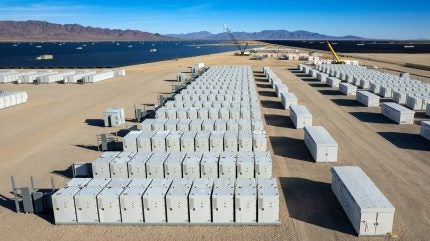
The Australian Capacity Investment Scheme (CIS) is set to bolster energy storage capabilities in Victoria and South Australia with support for six new large-scale battery projects.
The initiatives represent 3.6 gigawatt hours (GWh) of capacity and are part of the government’s commitment to enhance renewable energy dispatchable capacity and grid reliability.
In Victoria, EnergyAustralia will operate the Wooreen 350MW lithium-ion battery system at the Jeeralang power station site in Hazelwood North.
Project Power is also set to develop the Springvale Energy Hub, a 115MW lithium-ion battery system, on a former landfill site in southeastern Melbourne.
South Australia’s energy landscape will see the addition of the Limestone Coast West 250MW lithium-ion battery by Pacific Green Energy near Mount Gambier, and Zen Energy’s Solar River 170MW lithium-ion battery, which will accompany a 230MW solar farm north of Adelaide.
Pacific Blue will manage the Clements Gap 60MW lithium-ion battery at the Clements Gap wind farm, and EnergyAustralia will own the Hallett 50MW lithium-ion battery in Canownie.

US Tariffs are shifting - will you react or anticipate?
Don’t let policy changes catch you off guard. Stay proactive with real-time data and expert analysis.
By GlobalDataThe allocation from the CIS tender will deliver an additional 1,630 megawatt hours (MWh) of capacity to Victoria and 1,996MWh to South Australia.
It is estimated that these batteries, capable of running for up to four hours, will provide dispatchable energy that can supply peak electricity demand for a million homes.
The projects, which are conditional on signing a capacity investment scheme agreement, are expected to commence operations by mid-2027.
The CIS aims to encourage new investment in renewable energy dispatchable capacity, such as battery storage and generation from solar and wind, to meet growing electricity demand and fill reliability gaps as older coal power stations are phased out.
The Australian government has also indicated that two more CIS tenders are currently underway, with the next tender anticipated to open in late 2024.
In August 2024, the Australian Senate approved the Net Zero Economy Authority (NZEA) Bill, marking a step towards creating an independent statutory body for the nation’s energy sector.



